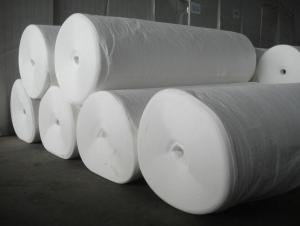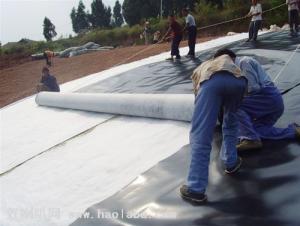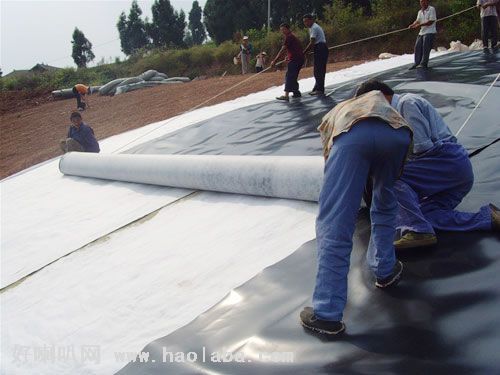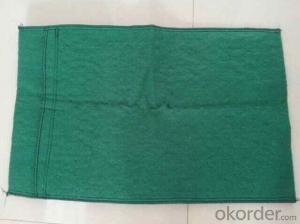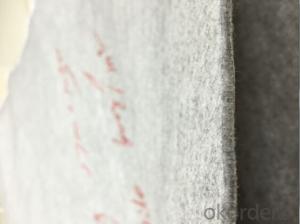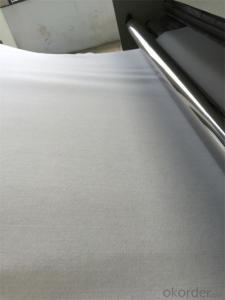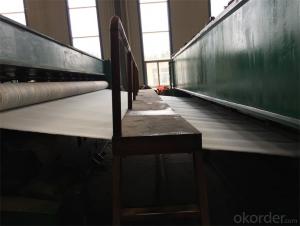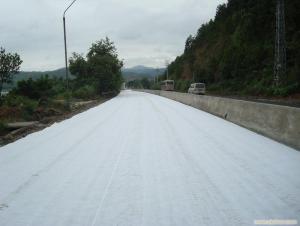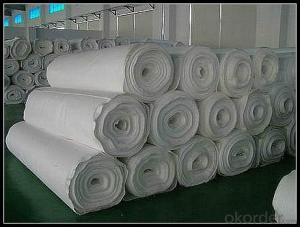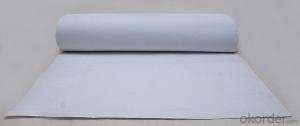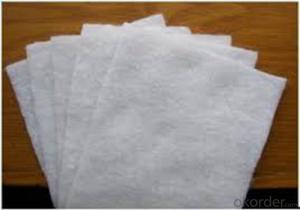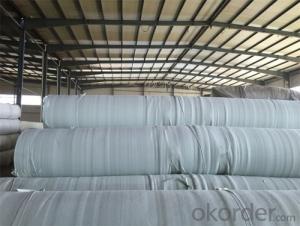L&M Geotextiles Continuous Filament Spunbonded Nonwoven Geotextile for Road and Railway Station
- Loading Port:
- Tianjin
- Payment Terms:
- TT OR LC
- Min Order Qty:
- -
- Supply Capability:
- 5000rolls m²/month
OKorder Service Pledge
OKorder Financial Service
You Might Also Like
Continuous Filament Spunbonded Nonwoven Geotextile forRoad and Railway station
Made from ultrahigh molecular weight polyethylene (UHMW-PE) fiber and PET fiberby nonwoven
Needle punched manufacturing process.
Specification ContinuousFilament Spunbonded Nonwoven Geotextile for Road and Railway station:
1.200G/M2 - 1200G/M2
2lm-6m in roll width, the length as clients ' request
Continuous FilamentSpunbonded Nonwoven Geotextile for Road and Railway station Property:
L. Super high strength, ultralight, high resistance
2. Resistance to chemical erosion, excellent water resistance
3. Abrasion resistant
4. Excellent anti-aging and anti-UV property, good weather fastness
Continuous FilamentSpunbonded Nonwoven Geotextile for Road and Railway station Application:
I. Separation and stabilization in road and railway construction
2. Reinforcement project
- Q: What can the geotext crushed material be used?
- Can continue to be used to do geotextile, but because the geotextile after the strength of the fiber is affected, can only be crushed after the geotextile for the production of low grade geotextile, for example, the national standard geotextile crushed material can generally be used Non-standard geotextile production, but in strict accordance with the proportion of added, should not add too much crushed material.
- Q: Can geotextiles be used for livestock waste management?
- Yes, geotextiles can be used for livestock waste management. They are commonly used as liners in lagoons or ponds to separate and contain livestock waste, preventing it from contaminating groundwater or nearby water bodies. Geotextiles can effectively filter and separate solid waste from liquid, allowing for proper waste management and reducing environmental impacts.
- Q: What are the cost considerations for geotextiles?
- The cost considerations for geotextiles include the material cost, installation cost, maintenance cost, and the overall lifespan of the geotextile. Additionally, factors such as the type and quality of the geotextile, the size of the project, and any specific requirements or regulations can also impact the cost. It is important to carefully evaluate these considerations to determine the most cost-effective solution for a geotextile application.
- Q: Can geotextiles be used in agricultural waste management systems?
- Yes, geotextiles can be used in agricultural waste management systems. Geotextiles can help in the filtration and separation of solid waste materials, such as manure or compost, in agricultural settings. They can be used to line waste storage structures, such as lagoons or ponds, to prevent leakage and protect the surrounding environment. Geotextiles also aid in the proper drainage of excess liquids and promote the decomposition process of waste materials.
- Q: How do geotextiles contribute to the efficiency of drainage systems?
- Geotextiles contribute to the efficiency of drainage systems by providing two main benefits. First, they act as a filter to prevent soil particles from clogging the drainage pipes or systems, allowing for a consistent flow of water. Second, they help to distribute the water evenly across the entire drainage area, improving the overall effectiveness of the system.
- Q: How do geotextiles help with filtration in wastewater treatment systems?
- Geotextiles help with filtration in wastewater treatment systems by acting as a barrier that separates the liquid from the solid particles. They allow the water to pass through while trapping and retaining the suspended solids, sediments, and other pollutants. This enhances the treatment process by improving the efficiency of filtration and preventing clogging or blockages in the system.
- Q: What are the factors affecting the performance of geotextiles?
- There are several factors that can affect the performance of geotextiles, including the type of material used, the manufacturing process, the installation method, the environmental conditions, and the design considerations. The strength, durability, and permeability of the geotextile, as well as its ability to withstand chemical and biological degradation, play a significant role in its performance. Additionally, factors such as soil characteristics, loading conditions, and the presence of water or chemicals can also impact the performance of geotextiles. Proper selection, installation, and maintenance are crucial in optimizing the performance and longevity of geotextiles.
- Q: Are geotextiles suitable for use in landfill caps?
- Yes, geotextiles are suitable for use in landfill caps. They provide a barrier and filtration system that helps prevent the escape of gases and leachate from the landfill, while also allowing for proper drainage. Geotextiles also help to stabilize the soil and prevent erosion, making them an effective solution for landfill cap construction.
- Q: Geotextile price is how much money
- Ask the geotextile price is too general, because the standard too much. Short wire, filament, polyester; non-standard, GB and so on. To Hongxiang Li Qian short wire geotextile price quote, for example, the price is generally between 4900-7500 yuan / ton, but the weight <200g, an increase of 100 yuan / ton; weight> 800g, an increase of 500 yuan /Ton. 187 & lt; 6600 & lt; 5604
- Q: What is the price of composite geotextile?
- Geotextile is divided into polyester short geotextile, staple acupuncture geotextile, polyester filament geotextile, woven geotextile, filament woven geotextile, and so on. Specifications and different models, the price is also different, composite geotextile weight in the 80-1500g / ㎡ between the quality standards are divided into non-standard, whitening A, Sinochem, the general national standard and so on. The t value is generally between 4900 and 7500 yuan / ton, 187 & lt; 6600 & lt; 5604
Send your message to us
L&M Geotextiles Continuous Filament Spunbonded Nonwoven Geotextile for Road and Railway Station
- Loading Port:
- Tianjin
- Payment Terms:
- TT OR LC
- Min Order Qty:
- -
- Supply Capability:
- 5000rolls m²/month
OKorder Service Pledge
OKorder Financial Service
Similar products
Hot products
Hot Searches
Related keywords
